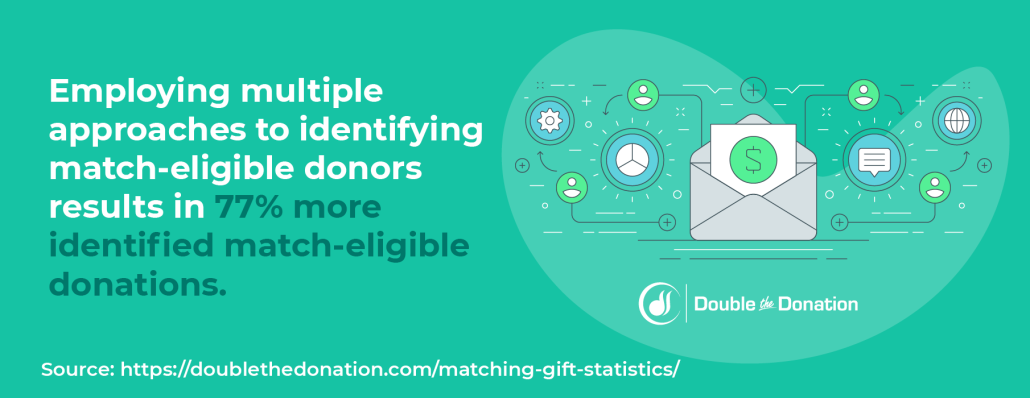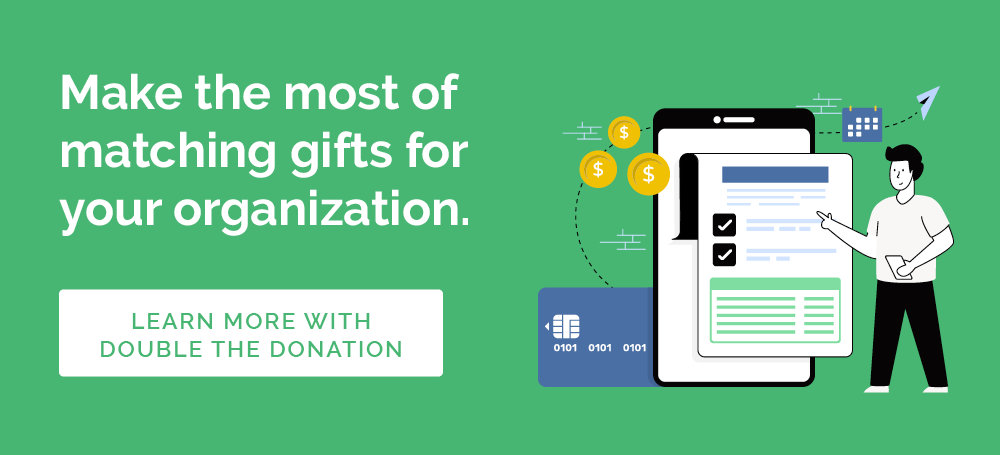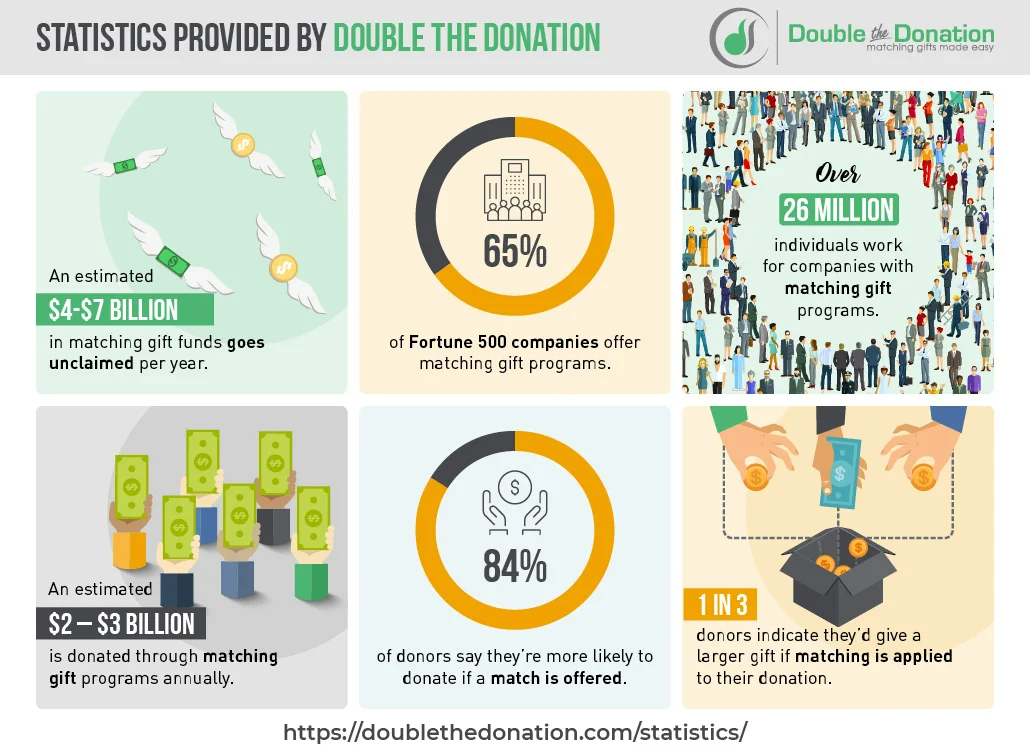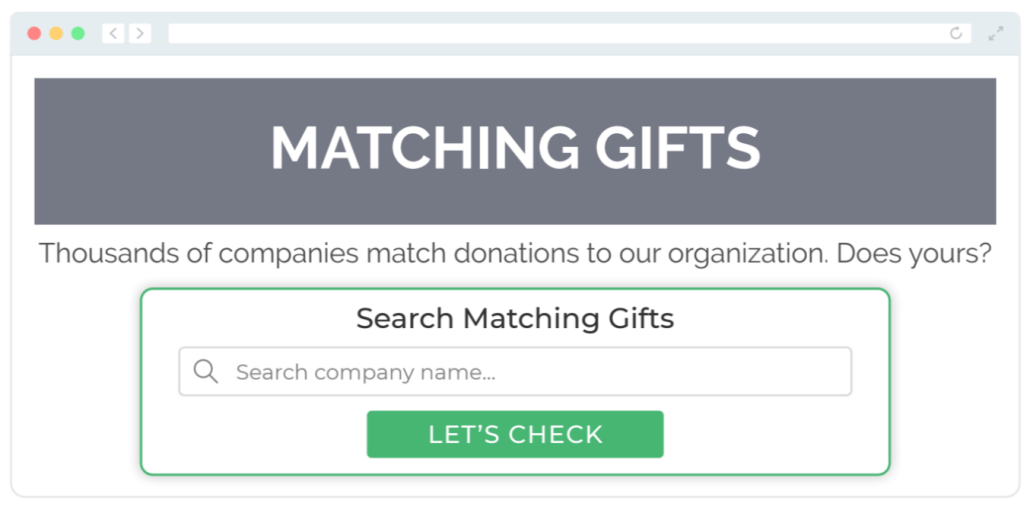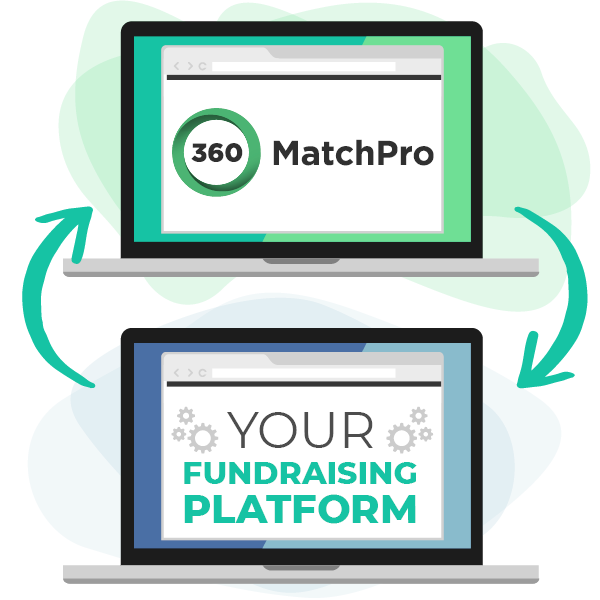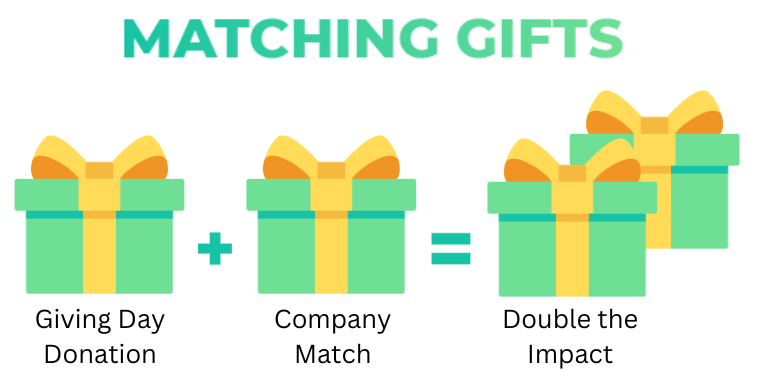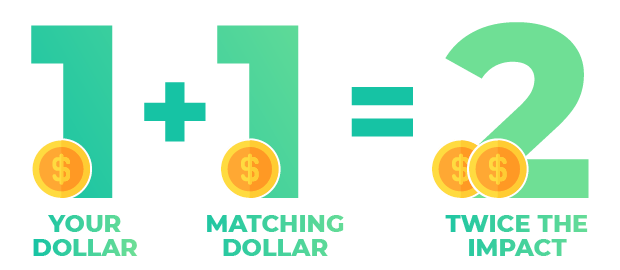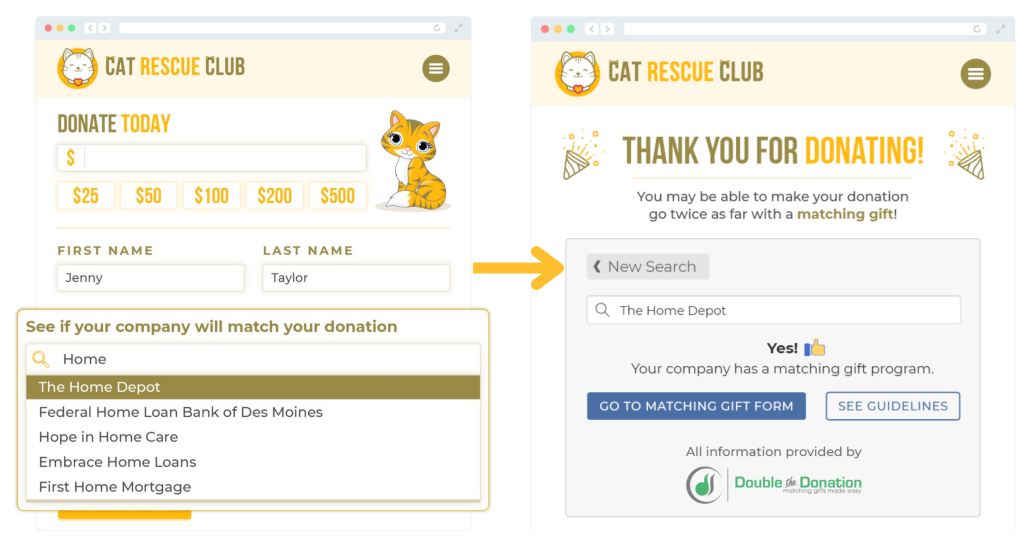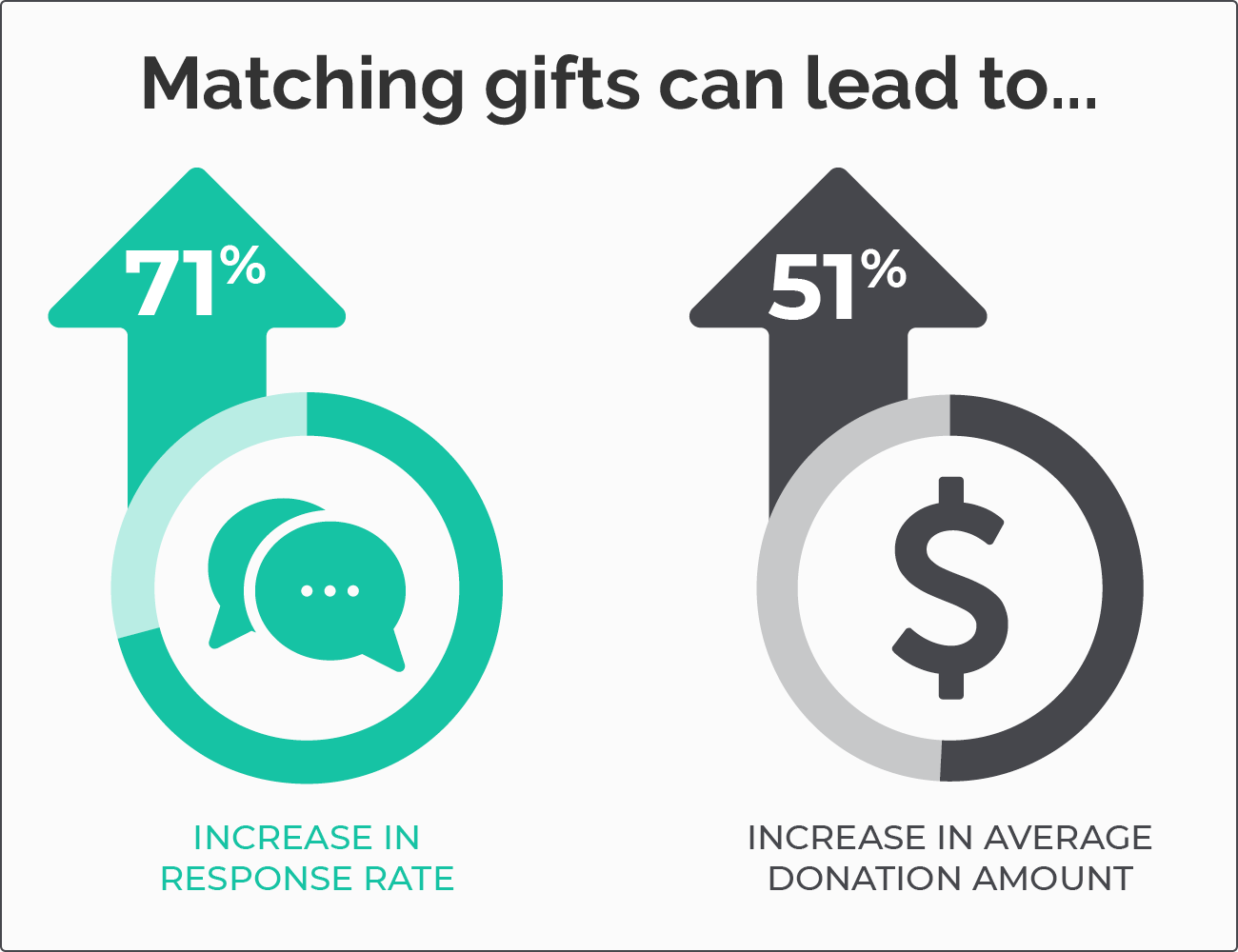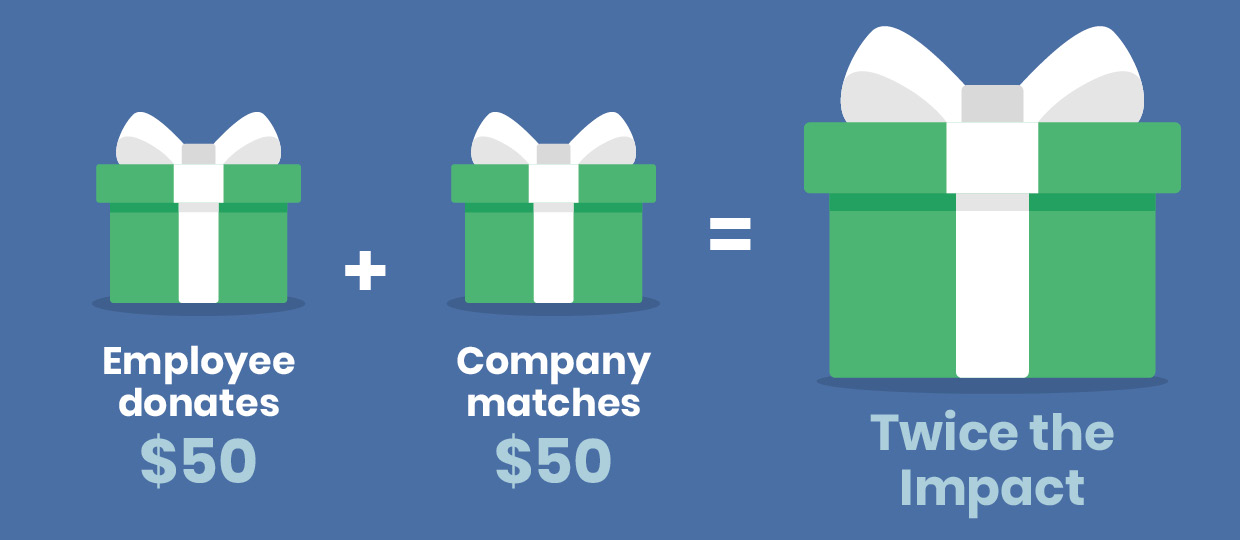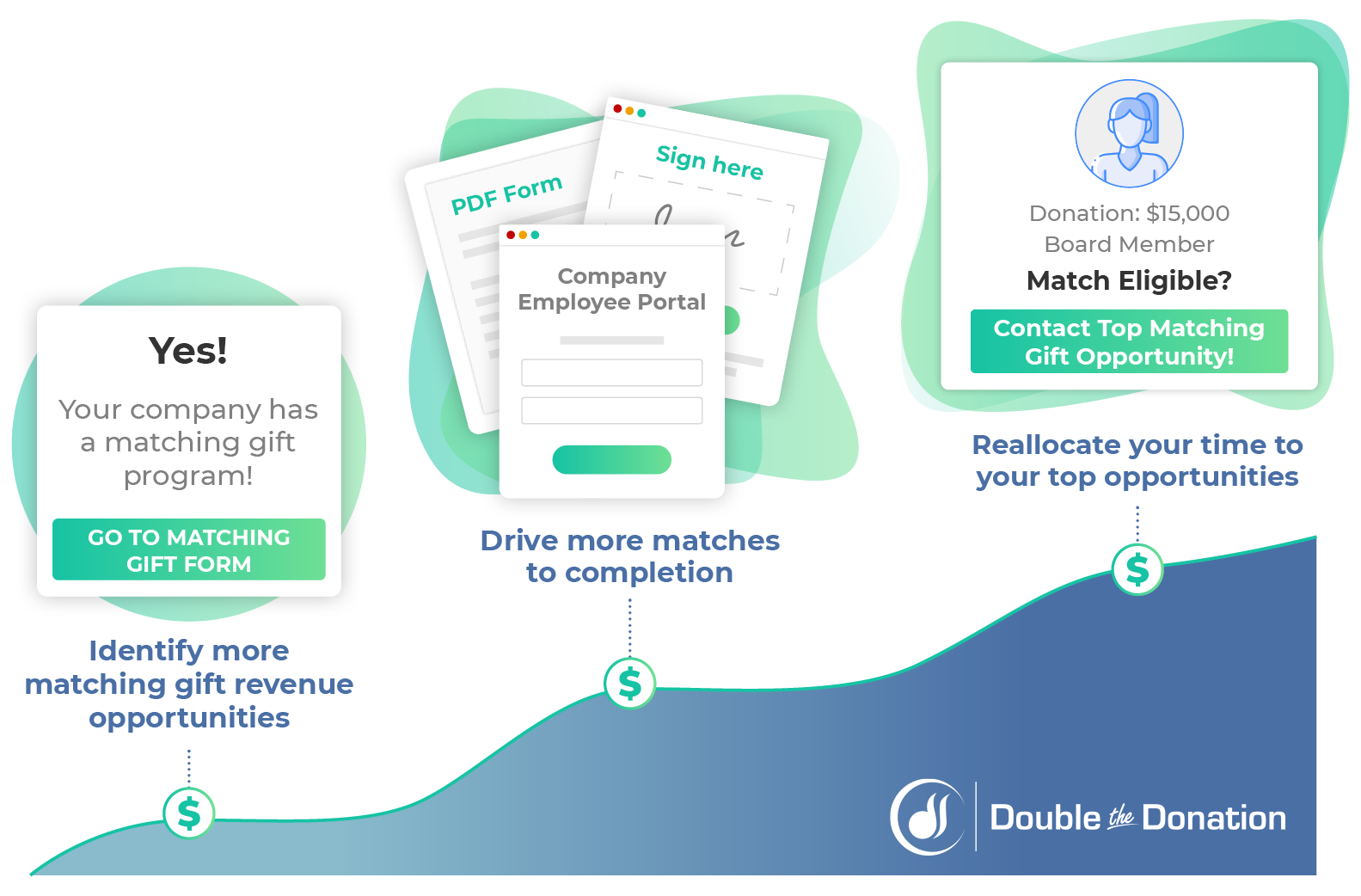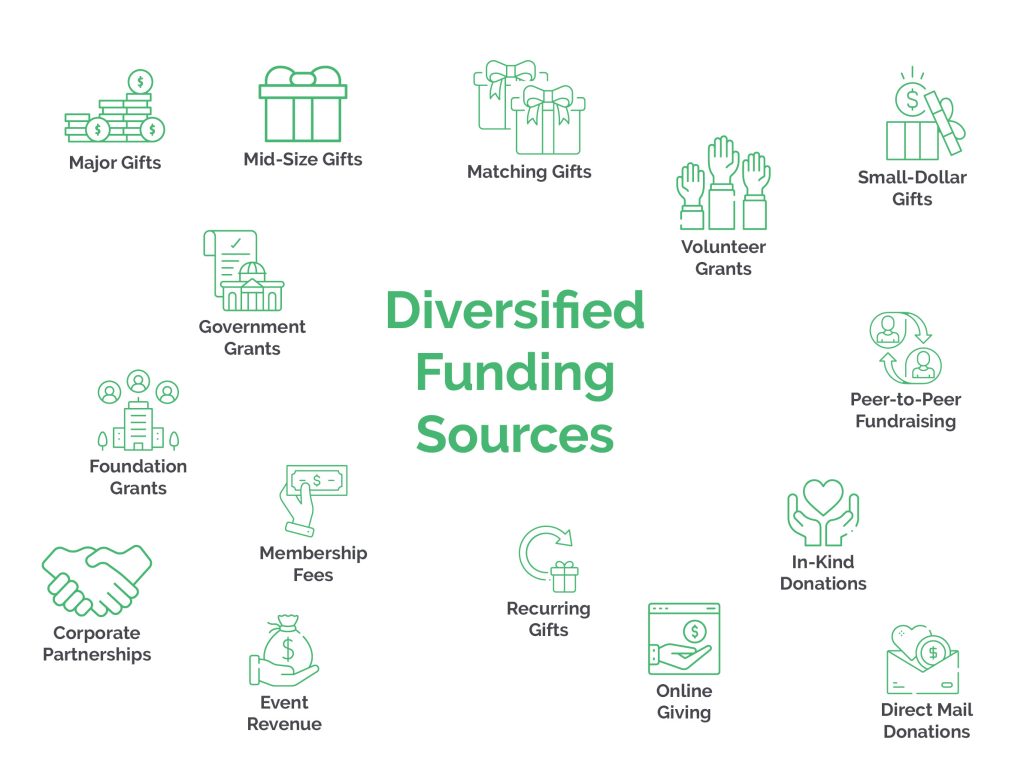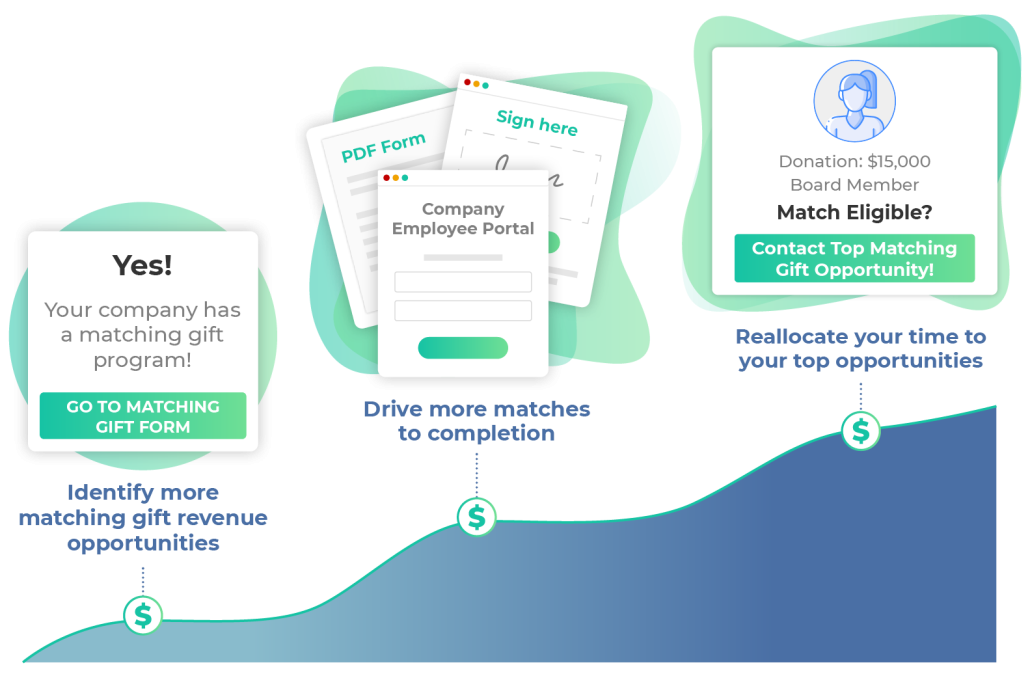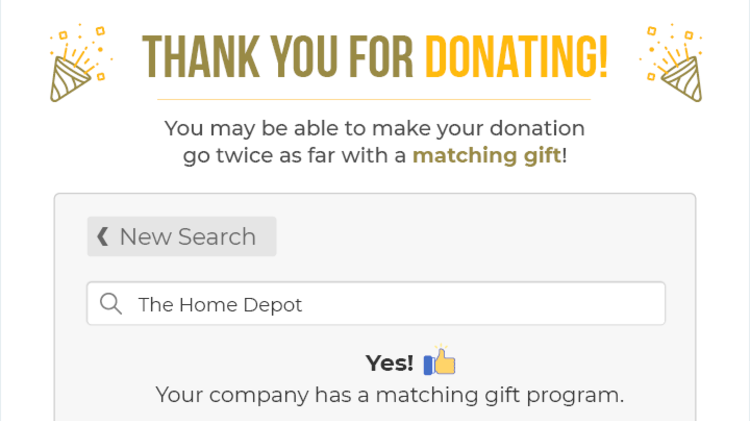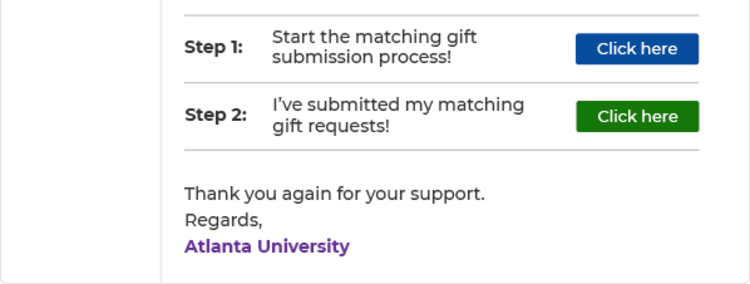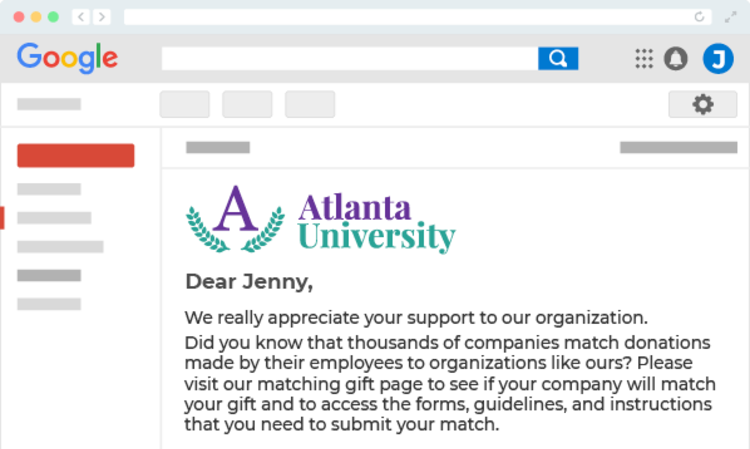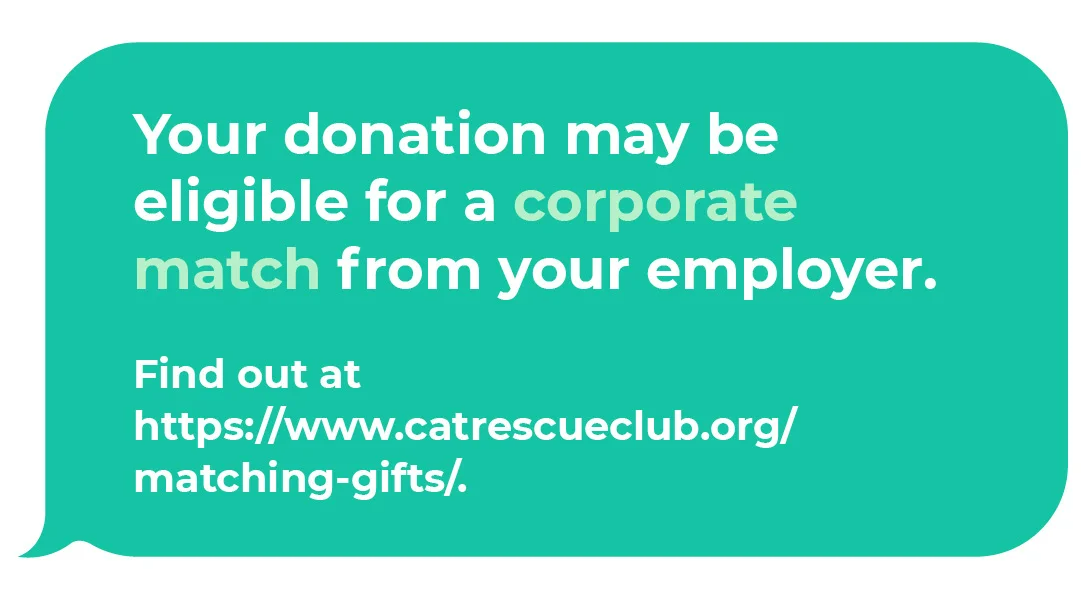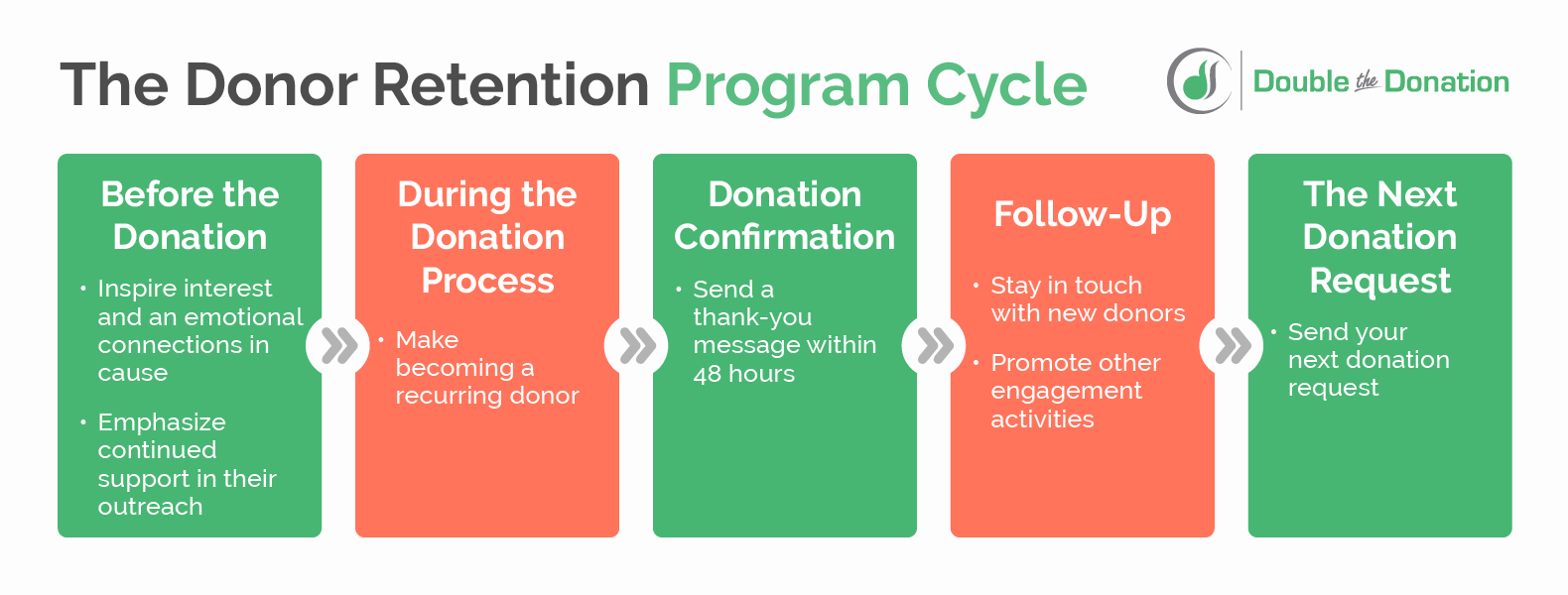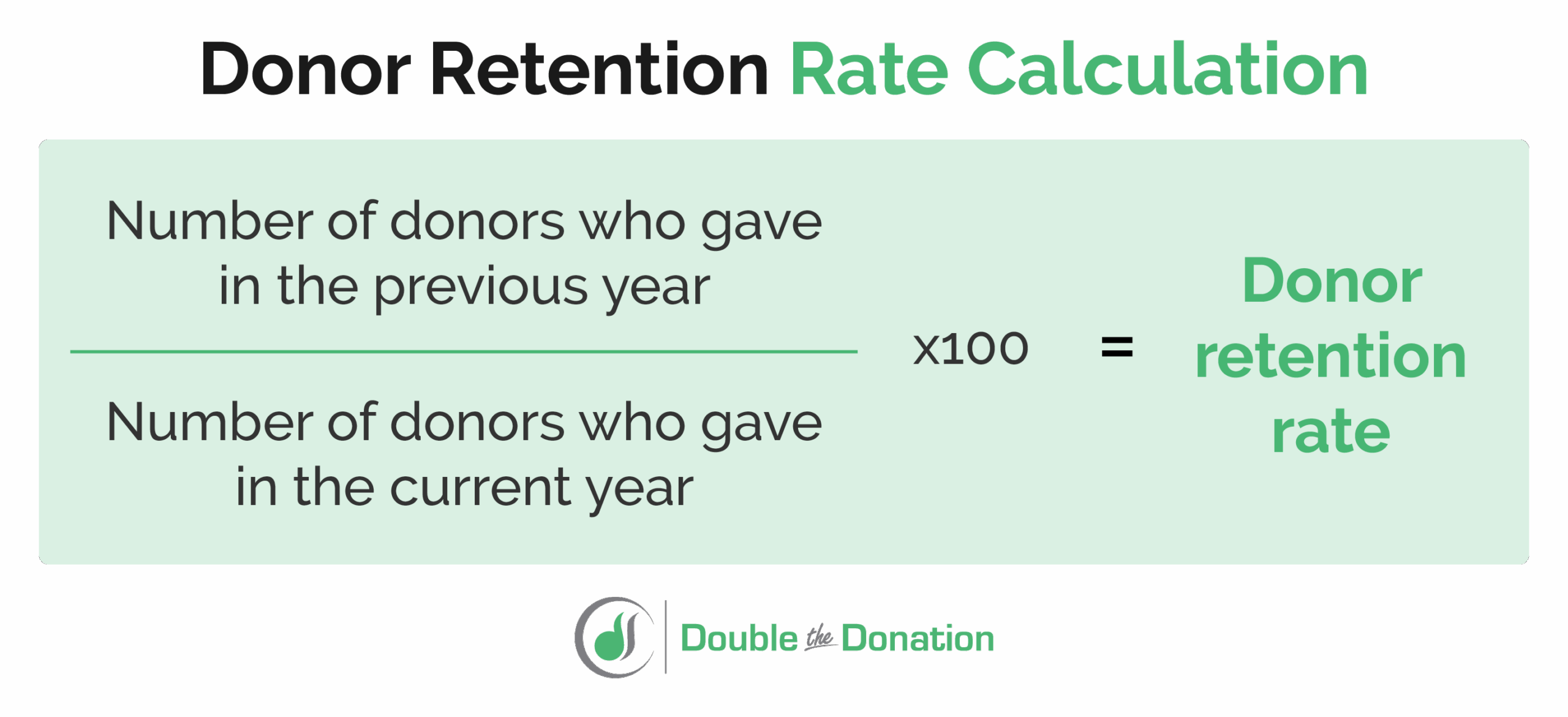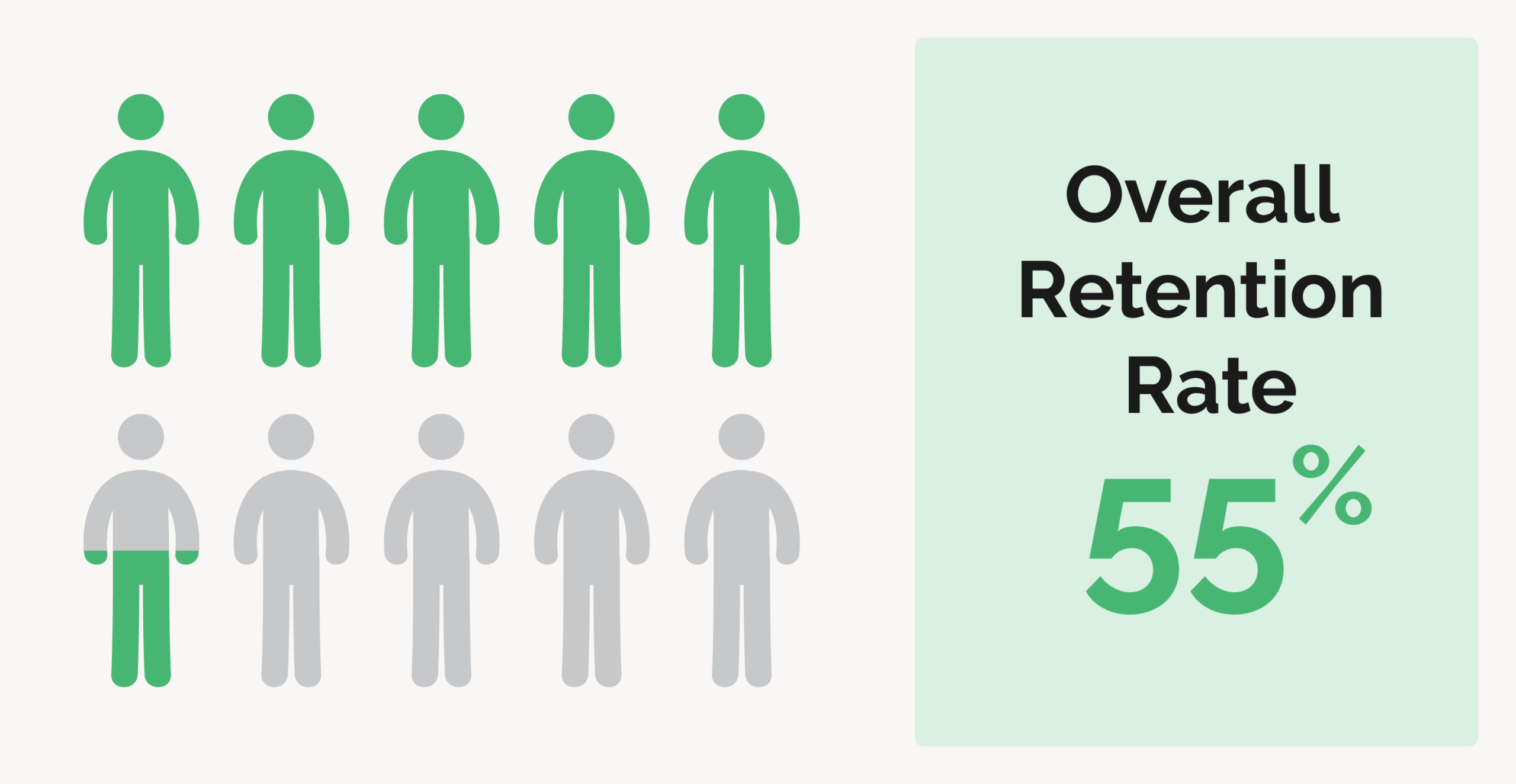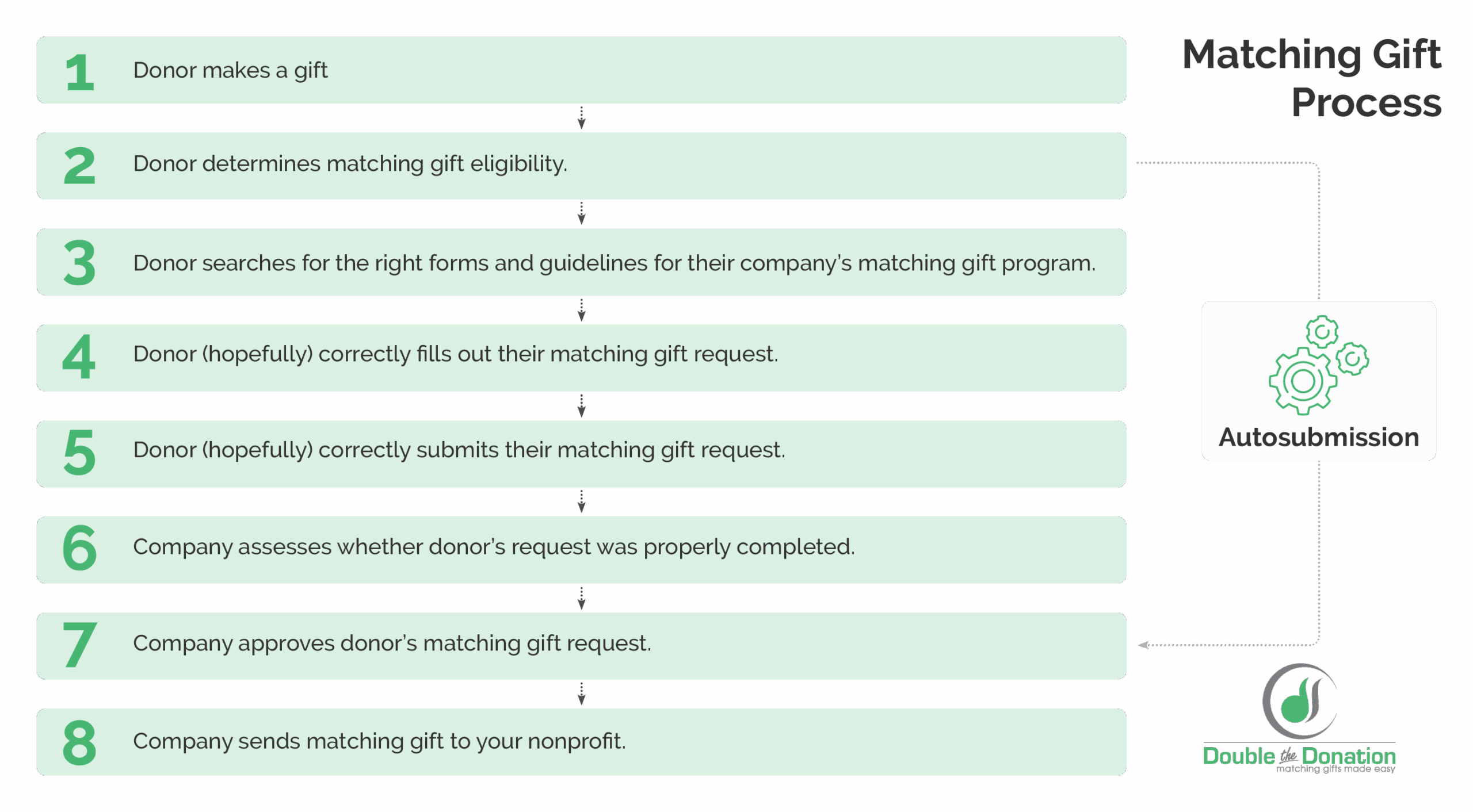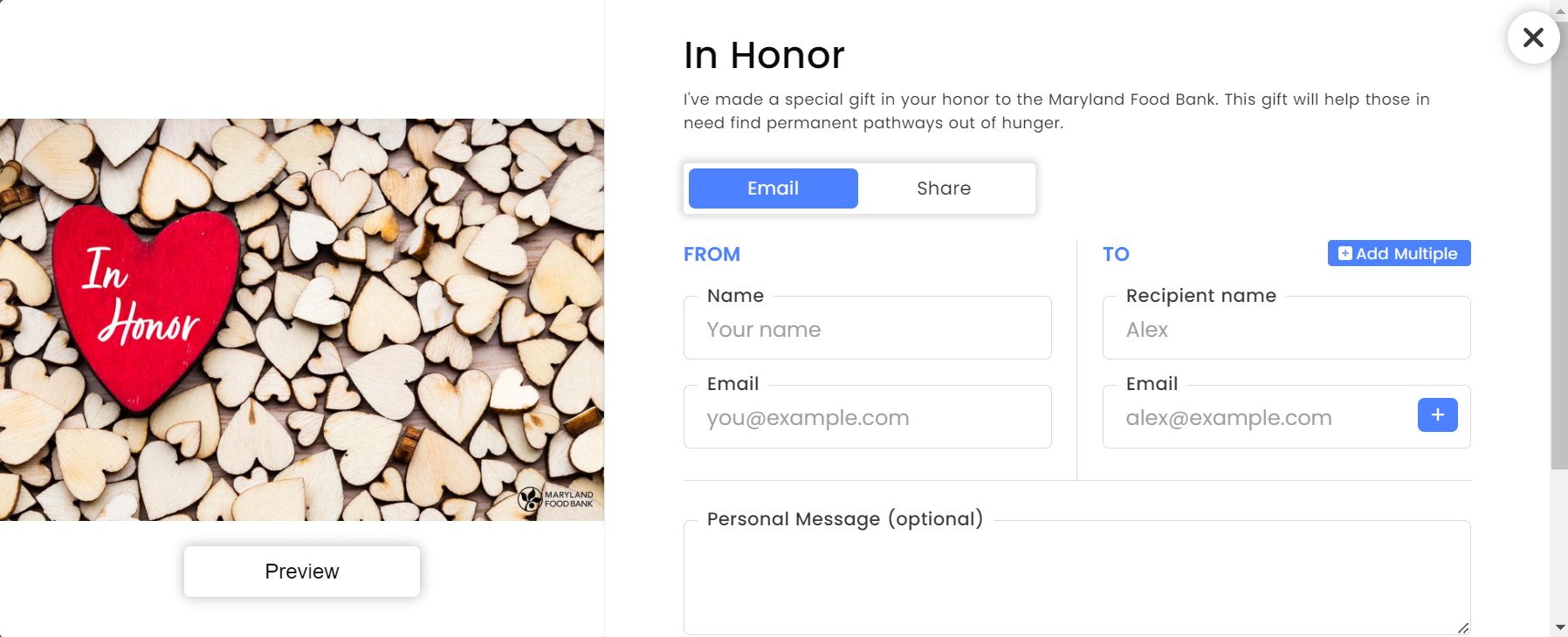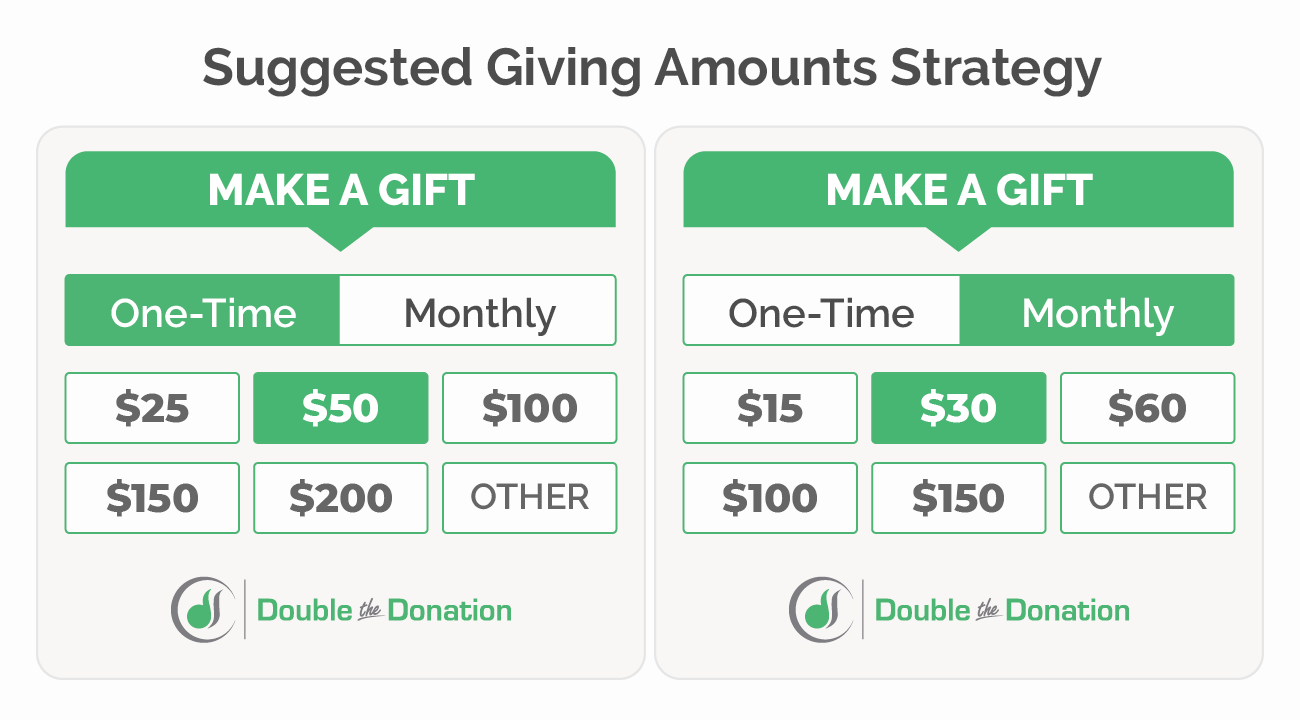Matching Gifts for Homeless Shelters & Missions | A Guide
As homelessness remains a persistent issue across the globe, the organizations that provide shelter and assistance to those in need are essential to our society. And in order to generate much-needed financial support for homeless shelters and nonprofit missions, impactful fundraising initiatives often come into play. Our favorite strategy for doing so is built around corporate matching gifts for homeless shelters and missions.
In this guide, we’ll provide an overview of corporate matching gift programs and share how these opportunities empower organizations to stretch their impact even further. Ultimately, it allows nonprofits like yours to maximize available resources that benefit widespread homeless communities. In turn, those communities, as well as those supporting them, are also positively impacted.
It’s a win-win-win—and an opportunity that your team should know more about. Dive in to explore the following topics:
- What to Know About Matching Gifts for Homeless Shelters & Missions
- Companies That Match Donations to Homeless Shelters
- Top Tips to Maximize Matching Gifts for Your Shelter or Mission
- 6 Matching Gift Templates for Missions and Homeless Shelters
A successful matching gift strategy produces more funds through both individual and corporate giving. This sets up nonprofit missions and shelters to do more to support the needs and lives of those experiencing homelessness.
It’s not an opportunity that you want to overlook.
What to Know About Matching Gifts for Homeless Shelters & Missions
Matching gifts can be a game-changer for organizations aiming to make the most of their fundraising efforts. Understanding the ins and outs of the programs is essential for maximizing their impact.
Here, we’ll cover the basics:
Corporate matching gifts are offered by companies to support their employees’ charitable contributions. When an employee donates to a qualifying nonprofit, the company matches the donation, typically at a dollar-for-dollar rate. These programs are designed to encourage philanthropy among employees and provide individuals with an active role in the company’s giving.
Each company establishes its own guidelines and requirements for matching gifts. While the guidelines vary from one employer to another, it helps to become familiar with common criteria. For example, most companies determine minimum and maximum donation thresholds, match ratios, qualifying employees and nonprofit causes, and more.
Organizations interested in increasing revenue through matching gifts should proactively educate their donors. Though more than 26 million individuals qualify for corporate matching programs, an estimated 78% of the group has no idea their company participates. Thus, utilizing your website, emails, social media, and more to inform individuals about the potential to double their impact through matching gift programs can go a long way in driving submissions.
Donors love having the opportunity to get their gifts matched. In fact, studies indicate that the offer of matching gifts can even result in more donors giving (71% increase in response rate)—and giving in larger amounts (51% increase in average donation)—in the first place.
The matching gift process can be streamlined with automation. Managing matching gift programs can involve administrative tasks such as screening for potential matches, following up with qualifying donors, and tracking matching gift requests. Matching gift technology can significantly reduce the administrative workload, empowering your team to focus on mission-critical tasks.
Companies That Match Donations to Homeless Shelters
Matching gift programs can greatly benefit nonprofit homeless shelters like yours, providing them with additional funding to support their work. While there are far too many companies with mission-inclusive matching initiatives, take a look at a few exemplary companies with a focus on supporting nonprofit homeless shelters below.
The Home Depot
Home Depot aims to support its employees’ philanthropic endeavors and make an impact on the communities in which it operates. With its corporate matching gift program, the company is able to do so!
Through this initiative, Home Depot employees have the opportunity to double their donations to eligible nonprofit organizations, including homeless shelters and missions, with a company match. This empowers employees to effectively double the impact of their own contributions, making a greater difference in supporting those in need.
Here’s a summary of the program offered:
- Minimum donation — None
- Maximum donation — $3,000
- Match ratio — 1:1
- Qualifying employees — Full-time, part-time
- Qualifying nonprofits — Health and human services, civic and community organizations, educational institutions, arts and cultural organizations, environmental nonprofits, and more
Dive deeper into Home Depot’s matching gift program.
Starbucks
Similarly, Starbucks makes a point to financially back the nonprofit causes its employees—or partners—support. This produces a positive impact in the communities the company serves, including a focus on organizations that address homelessness and those affected by it.
Through the Starbucks Giving Match Program, employees have the opportunity to stretch their own dollars further, thus maximizing their donation impact.
Here’s a summary of the program offered:
- Minimum donation — $25
- Maximum donation — $1,000
- Match ratio — 1:1
- Qualifying employees — Full-time, part-time
- Qualifying nonprofits — Nearly all, including health and human services, civic and community organizations, educational institutions, arts and cultural organizations, and environmental nonprofits
Dive deeper into Starbucks’s matching gift program.
Kimberly-Clark Corporation
At Kimberly-Clark, employees’ charitable giving is valued and supported through a generous matching gift program. Qualifying employees are encouraged to donate to eligible nonprofit organizations, with the company matching gifts for homeless shelters and other social good causes.
Kimberly-Clark also boasts a particularly high matching gift cap, encouraging high-level donors to get their gifts matched as well. (Not to mention, companies with lofty maximums tend to see heightened average participation rates of over 40%!)
Here’s a summary of the program offered:
- Minimum donation — $50
- Maximum donation — $10,000
- Match ratio — 1:1
- Qualifying employees — Full-time
- Qualifying nonprofits — Health and human services, civic and community organizations, educational institutions, arts and cultural organizations, environmental nonprofits, and most others
Dive deeper into Kimberly-Clark Corporation’s matching gift program.
Colgate-Palmolive Company
Colgate-Palmolive Company recognizes the importance of supporting charitable organizations, including those focused on homelessness and shelter services. Thus, through its matching gift program, employees are encouraged to support such causes. From there, the company matches employee gifts to stretch their value even further for the nonprofits they support.
Here’s a summary of the program offered:
- Minimum donation — $25
- Maximum donation — $8,000
- Match ratio — 1:1
- Qualifying employees — Full-time, part-time
- Qualifying nonprofits — Health and human services, civic and community organizations, educational institutions, arts and cultural organizations, environmental nonprofits, and select others
Dive deeper into Colgate-Palmolive Company’s matching gift program.
Caterpillar Inc.
Caterpillar Inc. values corporate social responsibility and provides a matching gift program as a key component of its dedication to supporting its employees’ charitable giving. Again, this company presents a generous donation maximum on an annual rolling basis—and full-time, part-time, and retired employees are all encouraged to participate.
Here’s a summary of the program offered:
- Minimum donation — $25
- Maximum donation — $10,000
- Match ratio — 1:1
- Qualifying employees — Full-time, part-time, retired
- Qualifying nonprofits — Health and human services, civic and community organizations, educational institutions, arts and cultural organizations, environmental nonprofits, and most others
Dive deeper into Caterpillar Inc.’s matching gift program.
Top Tips to Maximize Matching Gifts for Your Shelter or Mission
By effectively leveraging matching gift programs, shelters can enhance their ability to address homelessness and create positive change in their communities. Implementing the following practices in your strategy can help!
1. Use multiple screening methods to identify match-eligible donors.
The more you know about your donors—and particularly the companies they work for—the better you’ll be able to uncover matching gifts. If you already have donor employment data on hand, use the information to identify employers that match donations to shelters like yours.
And if you don’t know where a supporter works, we recommend employing multiple methods for collecting and screening this information. This might include a combination of…
- Donation forms requesting employment data
- Dedicated matching gift software
- Email domain screening
- Post-donation follow-up outreach
- Employer appends services
By using multiple methods, organizations can ensure they capture all potential matching gift opportunities and increase their chances of securing additional funding. In fact, studies indicate that taking more than one approach to identifying match-eligible donors results in 77% more identified match-eligible donations.
2. Don’t discount companies that typically exclude religious organizations.
If your shelter is associated with a religious institution, as many are, keep this in mind: you don’t necessarily need to discount companies with restrictions on matching gifts to religious causes. While some companies won’t match gifts to houses of worship, many still have policies open to supporting missions serving a secular purpose—like homeless shelters, soup kitchens, and more.
Thus, it’s crucial to thoroughly research (and perhaps reach out to) these companies to determine eligibility. And when you do so, be sure to provide a clear understanding of your shelter’s mission and the impact their matching gift could have on your community. Some decisions are made on a one-off basis, so it helps to put your best foot forward in positioning your cause as a worthy match recipient.
3. Consider volunteer grant programs (Dollars for Doers) as well.
In addition to traditional matching gift programs, where a company offers a financial match for an employee’s monetary support, many businesses also offer volunteer grants. Sometimes referred to as Dollars for Doers programs, these grants provide nonprofit organizations with grants based on an employee’s donation of their time. And if your shelter has a solid volunteer base, corporate volunteer grants can go a long way to amplify the value provided by existing support!
Just be sure to inform your volunteer base—as well as your nonprofit audience as a whole—about the potential for corporate grants. Like matching gifts, many qualifying volunteers likely have no idea that their employer will match their time devoted to nonprofits like yours. Leveraging the opportunity can not only produce additional funding but also result in increased volunteer and community engagement.
4. Leverage constituent stories to communicate matching gift impact.
Constituent stories have a powerful impact when connecting with donors and illustrating the mission of a nonprofit homeless shelter. Thus, when communicating the value and importance of matching gifts, consider incorporating personal stories from individuals who have directly benefited from your services.
To get started, take a look at the total funds you’ve received from corporate matching in the past. If your organization has collected $5,000 in donation matches, translate that revenue sum into tangible outcomes and success stories. You might even say something like this: “Matching gifts have produced over $[TOTAL] in value for [ORGANIZATION]. Thanks to this funding made available by matching gift donors going above and beyond for our cause, we’ve been able to serve more people like [SAMPLE CONSTITUENT].”
The more your supporters can understand the impact of corporate matching gifts, the more likely they’ll be to take the steps required to solicit a match from their employer! And it always helps to put a face to your fundraising efforts when possible.
5. Invest in matching gift software to automate your efforts.
Matching gifts offer an excellent opportunity to maximize corporate giving revenue, but pursuing the funding source can be time-consuming on your own. That’s why we recommend organizations employ matching gift software—like Double the Donation’s matching gift solution—to automate the process from start to finish.
A matching gift automation platform streamlines the experience for both nonprofits (such as your shelter or mission) and their donors, driving more matching gifts to completion than ever before. With groundbreaking features that include multiple forms of matching gift identification, automated post-donation follow-up messaging for donors, and match tracking through the disbursement process, your team is able to optimize its matching gift fundraising without the added effort.
6 Matching Gift Templates for Missions and Homeless Shelters
Bring your matching gift marketing efforts to the next level and get a headstart on your strategy. Take advantage of these free, customizable templates to begin incorporating corporate matching in your donor outreach.
1. Fundraising Appeal Template
[DONOR],
As we navigate the challenges of providing shelter and support to those experiencing homelessness in our community, we wanted to reach out and share an exciting opportunity to maximize the impact of your generosity.
Did you know that many companies offer matching gift programs to their employees? This means that when you make a donation to our homeless shelter, your employer may be willing to match it, effectively doubling the impact of your gift. It’s like giving twice the help to those in need!
By taking advantage of your employer’s matching gift program, you can significantly increase your contribution and provide even more critical resources to individuals and families seeking refuge and stability. This allows us to extend our reach and support more individuals in their journey toward permanent housing and self-sufficiency.
Here’s how you can make an even greater difference:
Make a donation: Your contribution, no matter the size, directly supports our efforts to provide a safe haven, nutritious meals, and essential services to individuals experiencing homelessness.
Check if your employer matches gifts: Visit our matching gift page to inquire about your matching gift eligibility using our company search tool here: [URL].
Submit a matching gift request: If your employer offers a match, simply follow the instructions provided by your company to submit a matching gift request. It’s a simple process that can significantly amplify your impact!
Spread the word: Encourage your colleagues, friends, and family members to join you in supporting our mission.
Thank you again for your generosity and dedication to our cause. It makes a lasting difference in the lives of those we serve. By doubling the impact of your donation through matching gifts, we can work towards a future where homelessness is no longer a reality for anyone.
Best regards,
[NONPROFIT]
2. Email Matching Gift Marketing Template
Subject: Double your impact…your donation can make twice the difference for homeless individuals!
Dear [DONOR],
Thank you for your continued support in helping us provide shelter and care for homeless individuals in our community. Did you know that your donation can have an even greater impact? Many companies offer matching gift programs that can double or even triple the value of your contribution.
By taking a few minutes to check if your employer offers a matching gift program, you can amplify the impact of your support. Imagine this: your generous donation could help provide access to a warm bed for two people in need.
To find out if your company participates in a matching gift program, please visit our matching gifts page here: [URL] or reach out to your HR department to learn more.
Thank you again for your kindness and generosity. Together, we can make an even greater difference in the lives of those experiencing homelessness.
Sincerely,
[NAME]
[NONPROFIT]
3. Text Message Matching Gift Marketing Template
[DONOR] — Did you know your donation to [NONPROFIT] can go even further for our cause? Many companies offer matching gift programs that can double your impact. Check to see if your employer matches gifts by searching here: [URL].
Together, we can make a greater difference for homeless individuals in our community.
4. Social Media Matching Gift Post Template
Your support matters—now more than ever! Did you know that your donation to [NONPROFIT] may be matched by your employer? Take a moment to find out if your company offers a matching gift program and make an even greater impact on the lives of those experiencing homelessness in our communities. #MatchingGifts #DoubleImpact
5. Matching Gift Web Page Template:
Text: Get Your Donation Doubled! Check if your employer matches gifts and amplifies your impact on our shelters.
Make your donation go further with matching gifts.
Your contribution to [NONPROFIT] can have an even greater impact when you participate in a corporate matching gifts program! Many companies offer matching gifts that double or triple the value of your donation.
By making the most of these programs, you can provide essential support to our shelters as we serve the community with your help. Check if your employer offers a matching gift program today and multiply the difference you make. Together, we can help end homelessness once and for all.
6. Direct Mail Matching Gift Marketing Template
Dear [DONOR],
Your generosity has made a significant impact on the lives of homeless individuals in our community. We want to share an exciting opportunity with you that will allow your support to go even further.
Many companies offer matching gift programs, which means your donation could be matched dollar for dollar by your employer. Matching gifts for homeless shelters like ours means that for every dollar you give, two dollars can go towards providing shelter, meals, and vital support for those in need.
Please take a moment to reach out to your HR department or check if your employer participates on our matching gifts page. The simple act of submitting a match request could make an immense difference in the lives of homeless individuals in your community.
Thank you for your continued compassion and support.
Sincerely,
[NAME]
[NONPROFIT]
Final Thoughts
By integrating matching gifts into your team’s overall fundraising, you have the chance to multiply the impact of each dollar you raise. Matching gifts for homeless shelters and other missions sets the organizations up to better provide vital resources and support to those who need it most.
Remember, the fight against homelessness is a collective effort. Your shelter should do what you can to partner with individual and corporate donors to make the largest impact possible. By leveraging matching gifts, spreading awareness about the opportunity, and encouraging supporters to participate, your organization can significantly enhance its operations thanks to access to new and growing funding streams.
Interested in learning more about matching gift fundraising strategies? Check out these additional recommended resources:
- Top Matching Gift Practices | Actionable Insights & Examples. Discover best practices to maximize matching gifts for your organization. Learn from real-world examples of smart nonprofits like yours.
- 8 Ways to Encourage Donors to Submit Employee Matching Gift Requests. Unlock fundraising potential by encouraging matching gifts. Use these strategies to help drive donors to completion.
- 215+ Amazing Fundraising Ideas for Your Organization. Matching gifts pair well with other fundraisers, too. Explore some of our favorite ideas to help your organization meet its fundraising goals.







